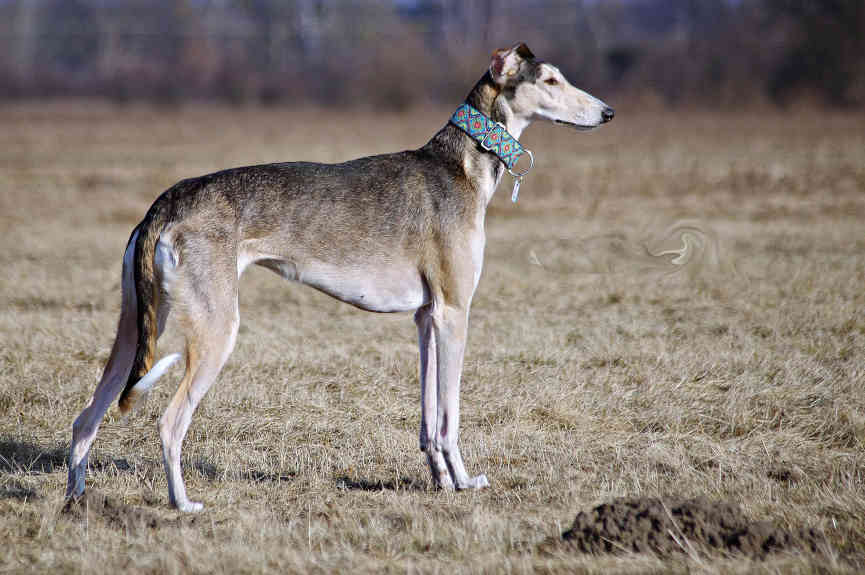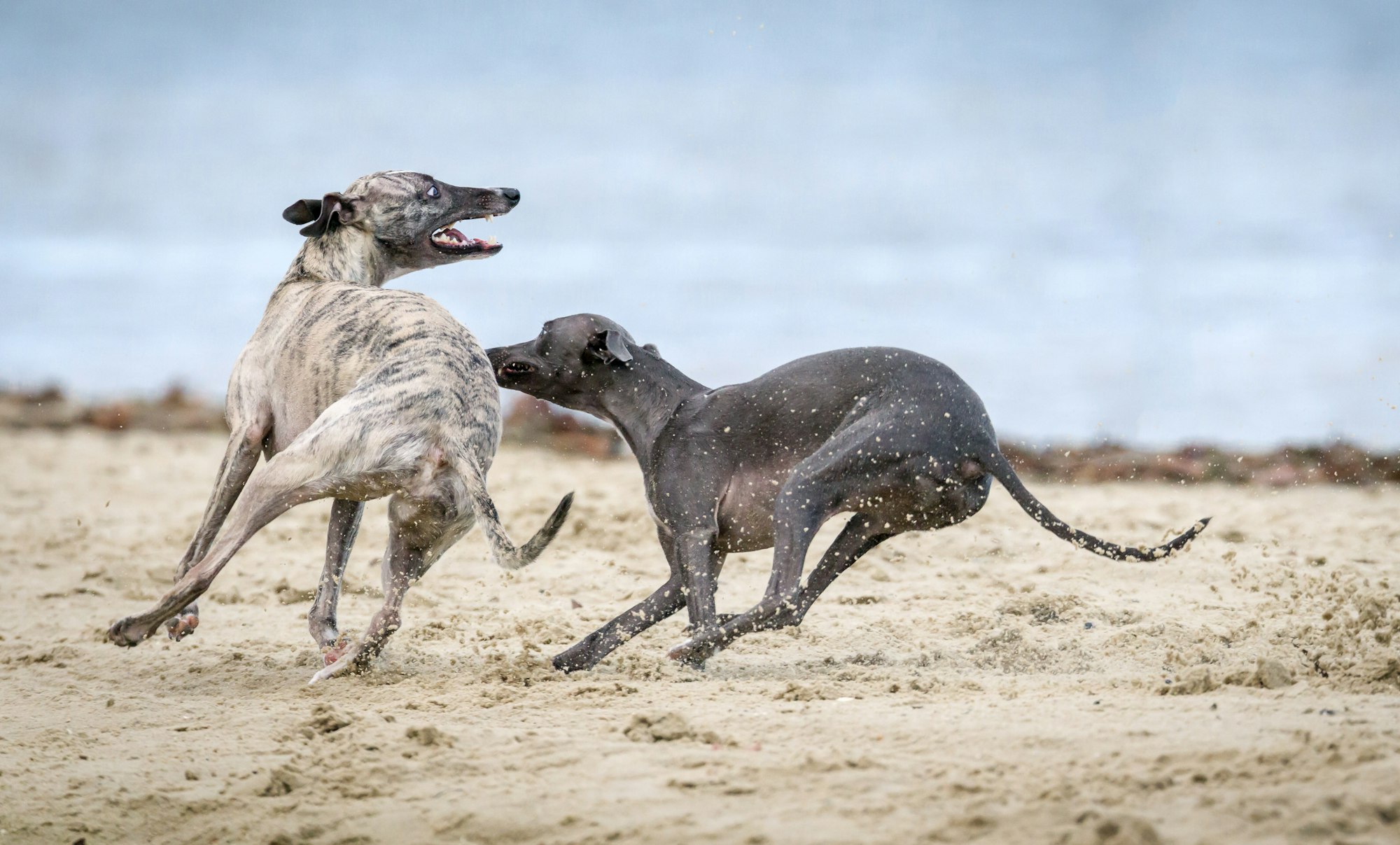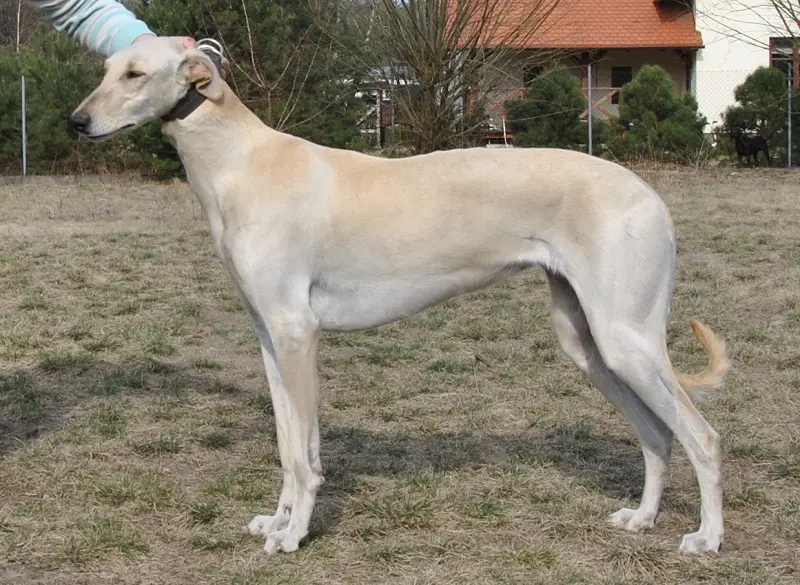Polish Greyhounds, often referred to as Chart Polski, stand as a testament to elegance and grace in the canine world. In this guide, we delve into the depths of their origin, unravel their physical traits, explore their temperament, and provide essential insights into their care and ownership.

Origin and History of Polish Greyhound
The history of the Polish Greyhound, or Chart Polski, is an illustrious tapestry woven with the threads of aristocracy and nobility. Originating in Poland, these regal canines were not merely companions but symbols of prestige and power. Tracing their roots back several centuries, one discovers a breed meticulously crafted for the refined tastes of the elite.
In the medieval courts of Poland, Polish Greyhounds were revered for their exceptional hunting prowess. These dogs were not mere hunters; they were an embodiment of elegance, grace, and unparalleled speed. It was not uncommon to witness these majestic creatures accompanying nobles on grand hunts, a display of both opulence and practicality.
As time unfurled, the Polish Greyhound transitioned from the exclusive domain of aristocrats to becoming cherished family members. Despite their noble past, their intrinsic qualities of loyalty, intelligence, and beauty endeared them to a broader audience. Today, these happy dogs carry within them the echoes of a grand history, yet their loyalty knows no class boundaries.

Physical Characteristics
Size and Build
The Polish Greyhound stands as a testament to the marriage of strength and elegance. With a well-proportioned build, these dogs exude an aura of athleticism and grace. Standing tall and proud, their physique is a harmonious blend of muscularity and agility, a living testament to the breed's historical role in hunting.
Coat Color and Texture
The coat of a Polish Greyhound is a canvas painted in a variety of colors, each shade contributing to its overall allure. From the classic black to the captivating brindle patterns, the coat is short, dense, and smooth to the touch. This minimalistic elegance not only adds to their visual appeal but also reflects their practical heritage as swift hunters.
Temperament and Personality Traits
The temperament of the Polish Greyhound is a finely crafted symphony of nobility, intelligence, and loyalty. Renowned for their calm demeanor and gentle disposition, these dogs make for exceptional companions. Their regal bearing, inherited from a history entwined with aristocracy, is coupled with a deep-seated loyalty that forms the cornerstone of their personality.
Polish Greyhounds are not just aesthetically pleasing; they possess an innate intelligence that sets them apart. Quick learners with a keen sense of their surroundings, these dogs exhibit an uncanny ability to understand and respond to their human counterparts. This intelligence, coupled with their gentle nature, makes them not only easy to train but a joy to have as part of the family.
While their dignified demeanor may suggest aloofness, Polish Greyhounds are known for forming strong bonds with their human companions. They thrive on companionship and are often found to be affectionate, seeking closeness with their family members. This loyal nature, combined with their intelligence, makes them versatile pets suitable for various living situations.
Training and Exercise Needs
Training a Polish Greyhound is a journey marked by cooperation and mutual understanding. Their intelligence and desire to please make them receptive to positive reinforcement methods. Establishing clear communication and building a foundation of trust are key elements in their training regimen.
Despite their historical hunting background, Polish Greyhounds are not overly demanding in terms of exercise. However, regular physical activity is crucial to maintain their overall well-being. Engaging in daily walks, playtime, and, if possible, allowing them to stretch their legs in a secure, open space ensures they remain physically fit and mentally stimulated.
Due to their sighthound lineage, it's essential to provide them opportunities for safe off-leash exercise. Being sight-driven, they may be inclined to chase moving objects, so controlled environments are vital. Mental stimulation is equally important; puzzle toys and interactive games can harness their intelligence and keep them engaged.
Health Considerations
The health considerations for Polish Greyhounds involve a meticulous understanding of their genetic predispositions and proactive care. While they are generally a robust breed, certain health issues are associated with their lineage, and responsible ownership demands vigilance.
Common Health Issues
Polish Greyhounds may be prone to certain conditions such as hip dysplasia and bloat. Regular veterinary check-ups are paramount to catch any potential issues early. Hip dysplasia, a hereditary condition, can be mitigated through proper breeding practices and maintaining a healthy weight for the dog. Bloat, a potentially life-threatening condition, can be minimized by feeding them smaller, more frequent meals and avoiding vigorous exercise immediately after eating.
Eye conditions, such as progressive retinal atrophy (PRA), can also affect Polish Greyhounds. Monitoring their vision and seeking veterinary advice at the first sign of any abnormalities is crucial. Additionally, heart issues, though relatively uncommon, should be monitored, emphasizing the importance of regular check-ups with a qualified veterinarian.
Veterinary Care Tips
Proactive veterinary care is key to ensuring the well-being of Polish Greyhounds. Regular check-ups, vaccinations, and dental care are essential components of their healthcare regimen. Maintaining a healthy diet, tailored to their specific needs, contributes significantly to their overall health.
As responsible stewards of these noble animals, it is imperative to educate oneself on breed-specific health concerns and work closely with a trusted veterinarian to develop a comprehensive healthcare plan. This proactive approach not only enhances the quality of life for the Polish Greyhound but also promotes longevity.
Grooming Requirements
While the Polish Greyhound boasts a short coat that requires minimal grooming compared to some other breeds, attention to certain aspects is crucial to maintain their overall health and appearance.
Regular brushing, at least once a week, helps keep their coat shiny and reduces shedding. Bathing is only necessary when they get dirty, as frequent baths can strip the coat of its natural oils. Paying particular attention to their ears and teeth is important. Cleaning ears regularly helps prevent infections, and dental care contributes to their overall well-being.
Trimming their nails, a task often overlooked, is vital to prevent discomfort and potential issues with movement. As their paw pads are sensitive, inspecting and caring for them, especially during extreme weather conditions, ensures the dog's comfort.
Feeding Guidelines
The nutritional needs of a Polish Greyhound are pivotal to their overall health, vitality, and longevity. Understanding their dietary requirements and tailoring their meals accordingly ensures that these majestic canines thrive.
A well-balanced diet, formulated to meet the energy demands of this breed, is essential. High-quality commercial dog food, with a focus on lean proteins, is recommended. The quantity of food should be adjusted based on the dog's age, weight, and activity level. While treats can be part of their diet, moderation is key to prevent excess calorie intake.
Polish Greyhounds have a relatively lean build, and overfeeding can lead to weight issues. Maintaining an ideal weight is crucial for their joint health and overall well-being. Regular monitoring of their weight and adjusting their diet as needed, in consultation with a veterinarian, ensures they receive the nutrition required to thrive.

Living with a Polish Greyhound
Suitable Living Conditions
Polish Greyhounds adapt well to various living situations, making them versatile companions. While they may appreciate a yard to stretch their legs, they are known to be adaptable to apartment living if provided with sufficient exercise. A secure, fenced yard is ideal for off-leash activity, considering their sighthound instincts.
Socialization Needs
Polish Greyhounds thrive on social interaction and form strong bonds with their human family. Early socialization is crucial to ensure they are comfortable around different people, pets, and environments. Providing mental stimulation through interactive dog toys and engaging activities contributes to their overall well-being.
These dogs appreciate a comfortable, quiet space for rest and relaxation. While they may be reserved with strangers initially, their gentle nature shines through with those they know well. Creating a conducive environment that balances their need for social interaction with moments of solitude contributes to a harmonious living arrangement.
Famous Polish Greyhounds
The annals of history are graced with the presence of notable Polish Greyhounds that have left an indelible mark, showcasing the breed's versatility and charm.
1. Szarik
Szarik, a legendary Polish Greyhound, gained fame during World War II. Known for his loyalty and intelligence, he played a pivotal role as a messenger dog in the Polish Underground. Szarik's courage and dedication underscore the breed's adaptability and innate intelligence.
2. Zefirka
Zefirka, a renowned Polish Greyhound, captivated hearts in the mid-20th century. Exhibiting grace in both the show ring and as a family companion, Zefirka showcased the breed's elegance and affectionate nature. Her legacy endures as a testament to the breed's adaptability to various roles.
Common Misconceptions
Polish Greyhounds, with their majestic presence and unique qualities, are sometimes subject to misconceptions that merit clarification.
1. Greyhounds are High-Maintenance in Terms of Exercise
Contrary to popular belief, Polish Greyhounds do not demand excessive exercise. While they enjoy a good run, their energy levels are moderate, making them adaptable to various living situations. Regular walks and playtime suffice to keep them content.
2. Greyhounds are Not Good with Children
Polish Greyhounds, known for their gentle disposition, can be excellent family dogs. Proper socialization and supervision are key factors in fostering a harmonious relationship between Greyhounds and children. Their calm nature often makes them patient companions.
3. Greyhounds are Aggressive Due to Their Hunting Background
While Greyhounds were historically bred for hunting, their temperament is far from aggressive. They are known for their calm demeanor and gentle nature. Proper training and socialization from an early age contribute to a well-adjusted and amiable companion.
4. Greyhounds Require Excessive Grooming
With their short and sleek coat, Polish Greyhounds are among the low-maintenance breeds when it comes to grooming. Regular brushing to minimize shedding, routine dental care, and basic hygiene practices are generally sufficient to keep them looking and feeling their best.
In dispelling these misconceptions, it becomes evident that Polish Greyhounds, far from fitting into stereotypes, are versatile, gentle, and delightful companions that thrive in various roles and environments.

Choosing a Polish Greyhound as a Pet
Selecting a Polish Greyhound as a pet is a decision that involves careful consideration and understanding of the breed's unique characteristics.
1. Lifestyle Compatibility
Before bringing a Polish Greyhound into your home, assess your lifestyle. While they are adaptable to various living situations, they thrive in environments where their need for exercise, mental stimulation, and social interaction is met. If you lead an active lifestyle and seek a companion for walks and play, a Polish Greyhound may be an ideal fit.
2. Space Requirements
While Polish Greyhounds can adapt to apartment living, having a secure, fenced yard provides them with opportunities for off-leash exercise, catering to their sighthound instincts. Ensure that your living space, whether an apartment or a house, meets their need for both indoor comfort and outdoor exploration.
3. Commitment to Exercise
Although not excessively demanding in terms of exercise, Polish Greyhounds benefit from daily walks and playtime. Committing to regular exercise is essential for their physical and mental well-being. If you are prepared to provide the necessary activity, a Polish Greyhound can be a rewarding and loyal companion.
4. Time for Socialization
Polish Greyhounds are known for their gentle nature and adaptability to various social settings. However, early socialization is crucial to ensure they are comfortable around people, other pets, and different environments. Dedicate time to their social development, fostering a well-adjusted and confident companion.
Responsible Ownership
1. Regular Veterinary Care
Responsible ownership of a Polish Greyhound entails regular veterinary check-ups. Proactive healthcare, including vaccinations, dental care, and preventative measures for breed-specific health concerns, contributes to their overall well-being. Establishing a relationship with a qualified veterinarian is paramount.
2. Nutritional Considerations
Provide a balanced and nutritious diet tailored to the specific needs of Polish Greyhounds. High-quality dog food, adjusted based on age and activity level, ensures they receive the essential nutrients for optimal health. Responsible owners monitor their dog's weight and adjust their diet accordingly to prevent obesity.
3. Grooming Practices
While Polish Greyhounds have a short coat that requires minimal grooming compared to some breeds, routine care is still essential. Regular brushing, ear cleaning, dental care, and nail trimming contribute to their overall health and well-groomed appearance. Maintaining their hygiene is a responsibility that responsible owners prioritize.
4. Identification and Safety Measures
Responsible ownership includes measures to ensure the safety of your Polish Greyhound. This involves proper identification, such as a microchip and a secure collar with identification tags. Additionally, providing a safe and controlled environment, especially during outdoor activities, minimizes the risk of accidents or escapes.

Conclusion
In conclusion, the Polish Greyhound stands as a captivating breed, combining elegance with a warm, loyal nature. Whether you're an experienced owner or considering them for the first time, these dogs offer a unique and rewarding companionship.
FAQs
- What is the lifespan of a Polish Greyhound?
- Polish Greyhounds typically live around 10 to 14 years, with proper care.
- Do Polish Greyhounds get along with other pets?
- Their social nature often makes them compatible with other pets, especially if introduced early.
- How much exercise does a Polish Greyhound need?
- They are an active breed and require at least 30 to 60 minutes of exercise daily.
- Are Polish Greyhounds easy to train?
- Yes, they are intelligent and respond well to positive reinforcement training methods.
- Do Polish Greyhounds have specific dietary requirements?
- While they don't have stringent dietary needs, a high-quality dog food that suits their activity level is recommended.




